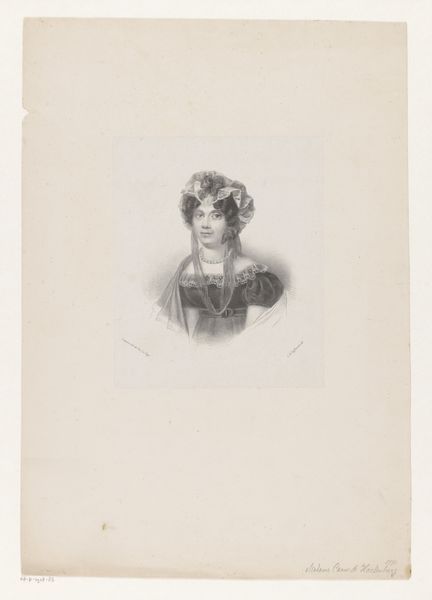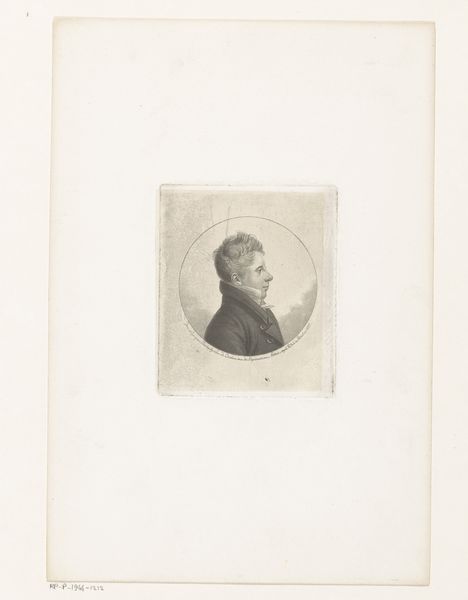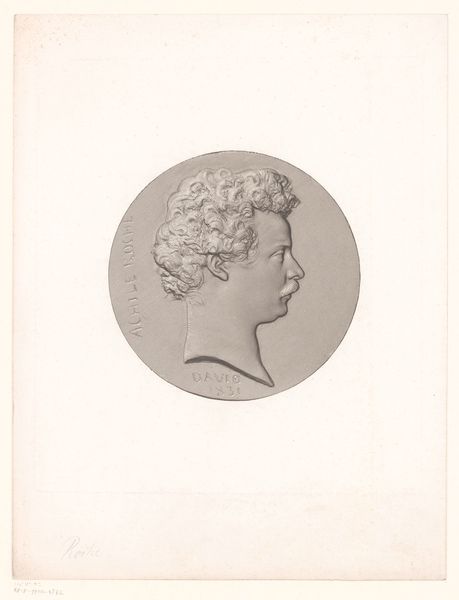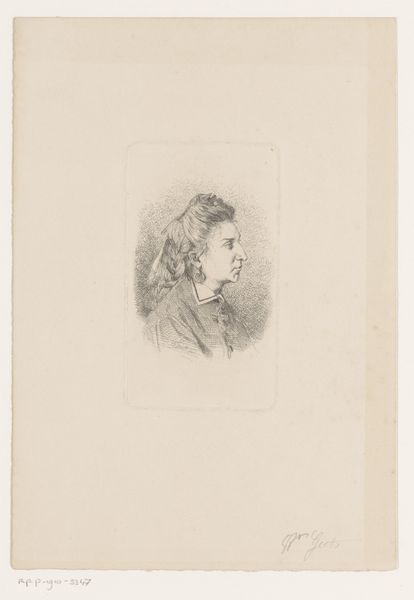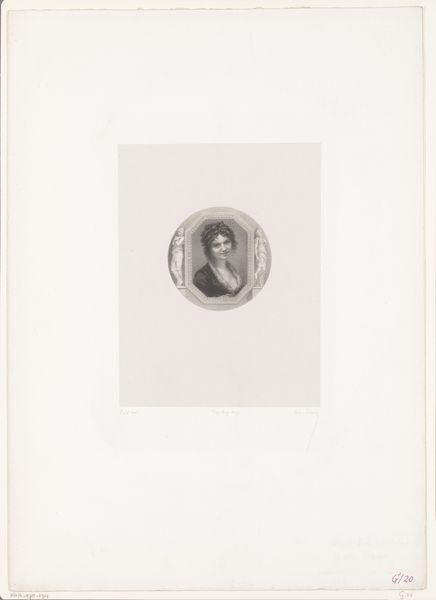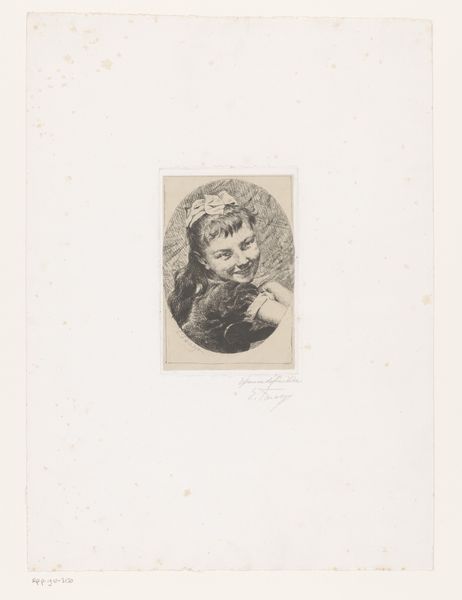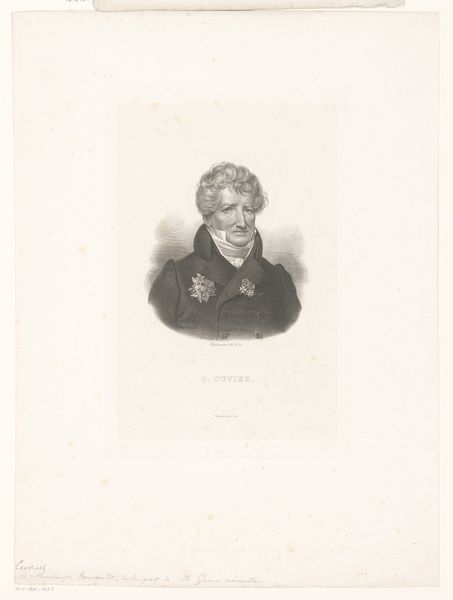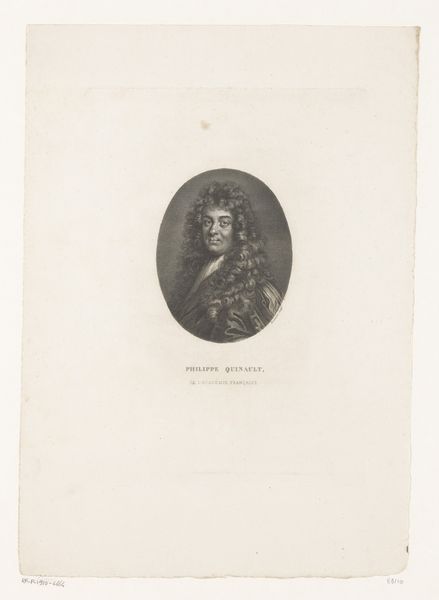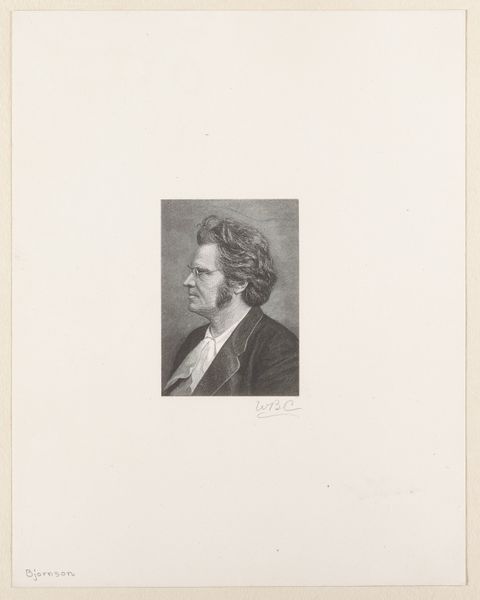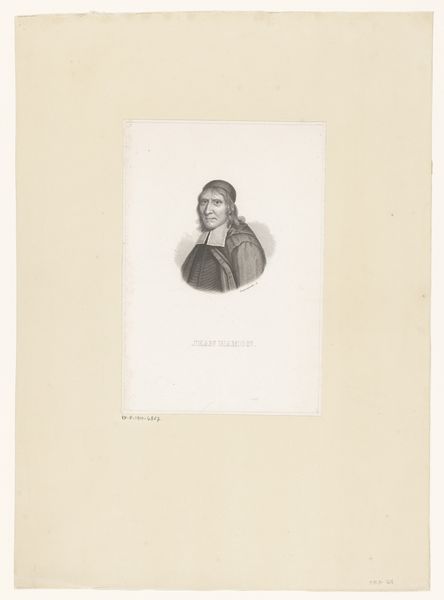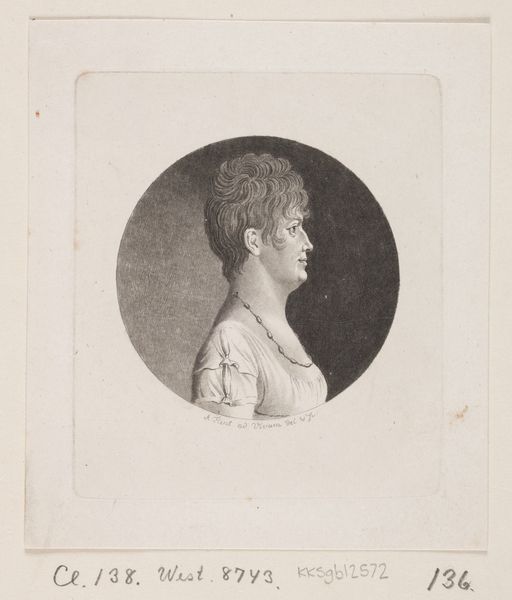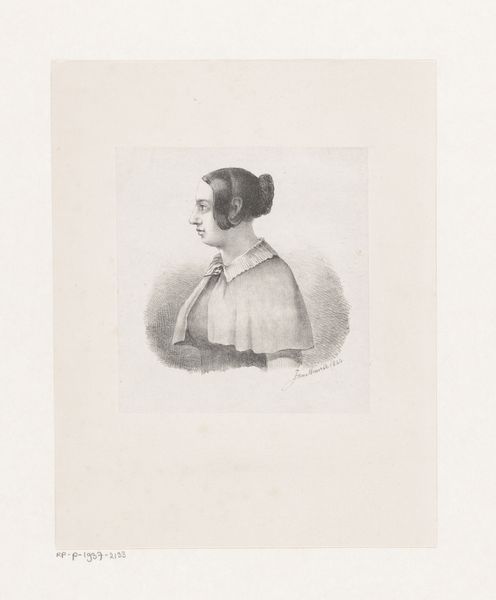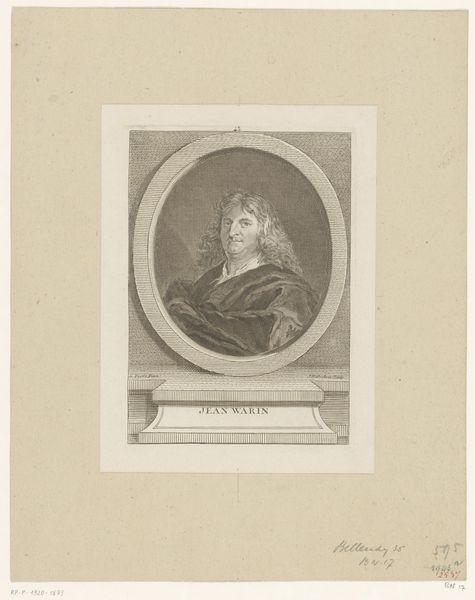
drawing, paper, pencil, graphite
#
portrait
#
drawing
#
neoclacissism
#
figuration
#
paper
#
form
#
pencil
#
line
#
graphite
#
realism
Dimensions: height 170 mm, width 115 mm
Copyright: Rijks Museum: Open Domain
This finely etched portrait of Edme Quenedey by Soliman Lieutaud captures the sitter in profile, a convention with deep historical roots. The profile view, harking back to ancient coins and Roman portraiture, was often used to convey nobility and intellect. Consider the repeated use of the profile throughout history, from pharaohs on ancient Egyptian reliefs to emperors on Roman coins. Each age uses this symbol to project authority and timelessness. In the Renaissance, the profile emerges again as a symbol of humanism, celebrating the individual. Even today, it appears, subtly altered, in modern graphic design and corporate logos. What psychological impulse drives the repeated use of this symbol? Is it an attempt to immortalize the self, to fix the fleeting nature of existence in a lasting image? The profile, stripped of direct eye contact, invites a detached, almost clinical observation, reflecting our complex relationship with identity and representation. It's a powerful force, engaging viewers on a subconscious level. This symbol did not have a linear progression, but rather a cyclical pattern of rediscovery and reinterpretation.
Comments
No comments
Be the first to comment and join the conversation on the ultimate creative platform.

